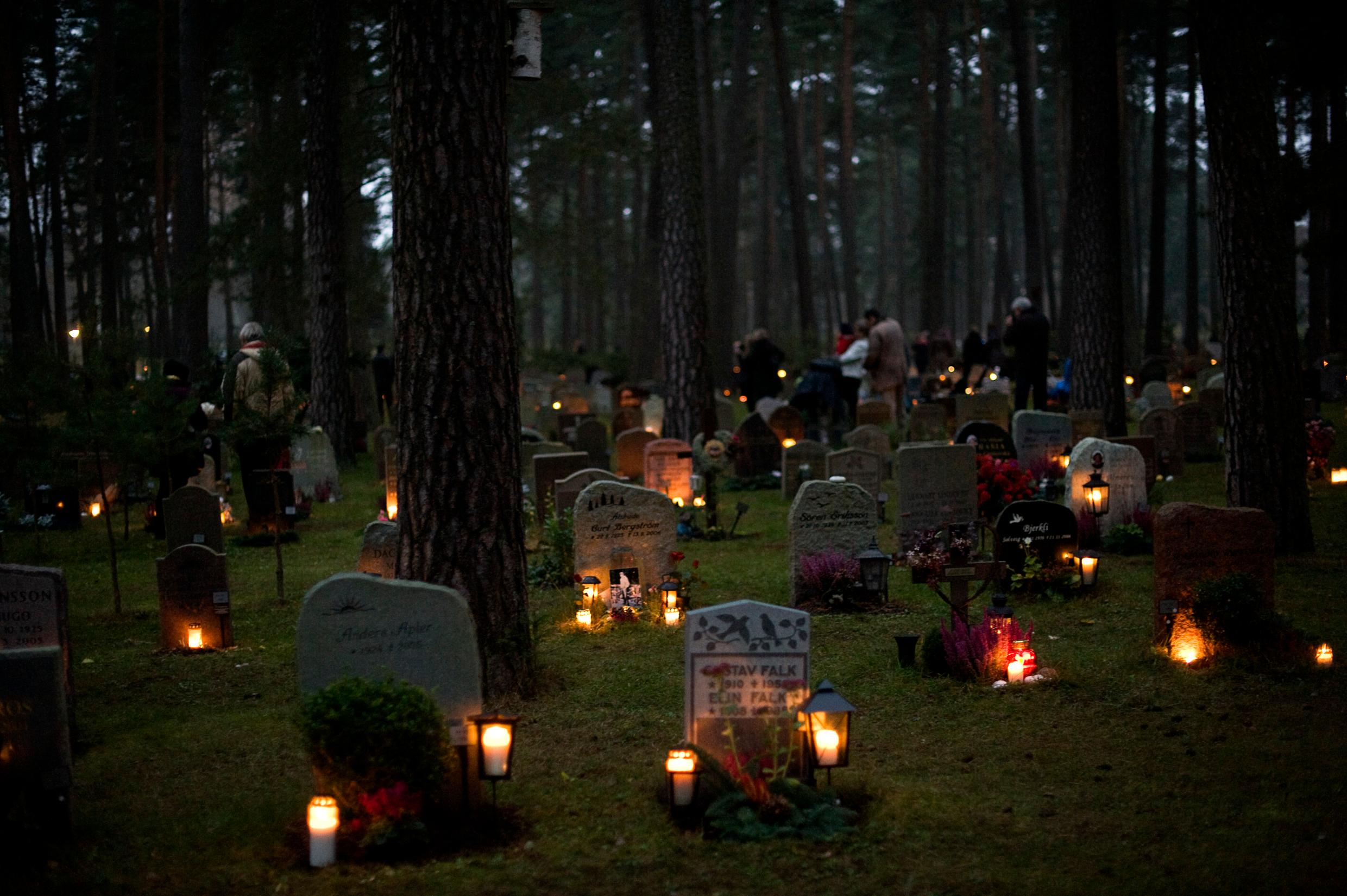All Saints’ Day in Sweden
On All Saints’ Day cemeteries are aglow, as people light candles for lost loved ones.
It's All Saints' Day in Sweden. The countless points of light from the candles and lanterns placed on graves form beautiful patterns in the snow and lend a special feel to the landscape. People also lay flowers and wreaths on graves. A jar of flowering heather stands up well to the cold.
All Saints' Day in Sweden – always on a Saturday
Since 1953, people in Sweden observe All Saints' Day on the Saturday between 31 October and 6 November. It’s a public holiday, and most shops tend to have Sunday opening hours.
To many, this day remains a day to visit a cemetery to light candles and lay flowers on a grave or by a memorial grove. Many churches across the country organise concerts to celebrate All Saints’ Day.
Some regard this day as an occasion to stay at home with family or friends and cook a festive meal.
All Saints’ Day – the origins
In the year 731 AD, 1 November was designated a day of remembrance for saints of the church who had no days of their own. From the 11th century, 2 November was dedicated to all the dead, of whatever standing, and was called All Souls’ Day. Many people observed this day with requiems and bell-ringing, but these customs were abolished with the arrival of the Reformation.
In 1772, All Saints’ Day in Sweden was moved to the first Sunday in November, and in 1953 to the Saturday between 31 October and 6 November.
During the 1900s, people in Sweden began putting lighted candles on the graves of the departed on All Saints’ Day. This custom originated with wealthy families in towns and cities, but spread throughout the country after World War II. Churches also began holding services of light to mark the day.
